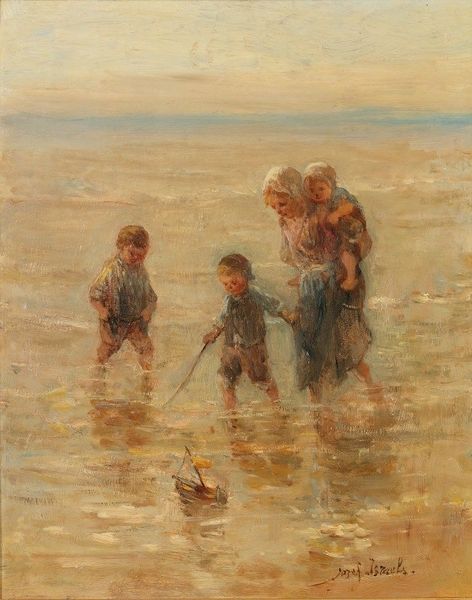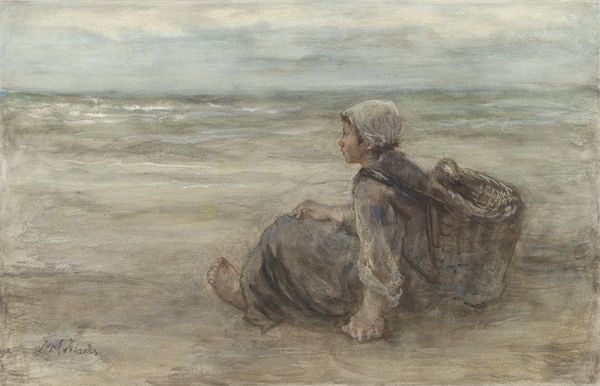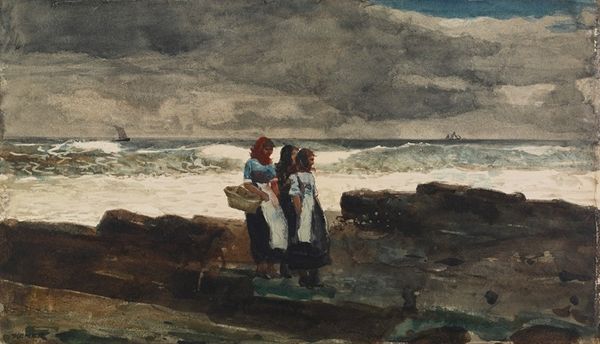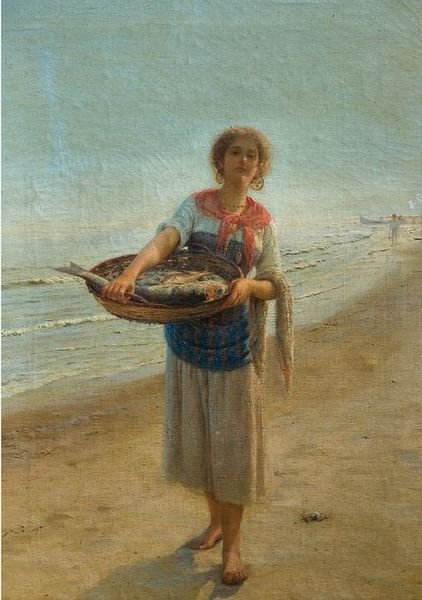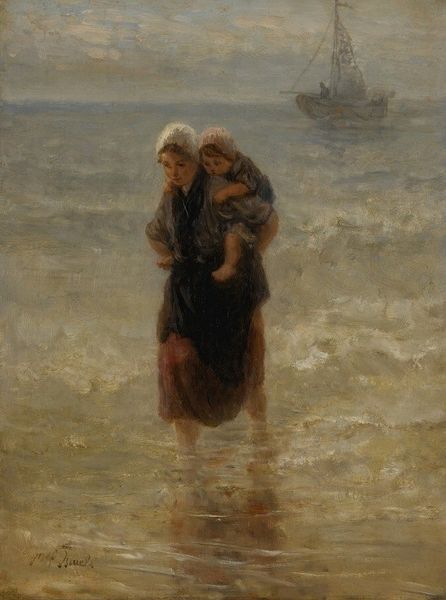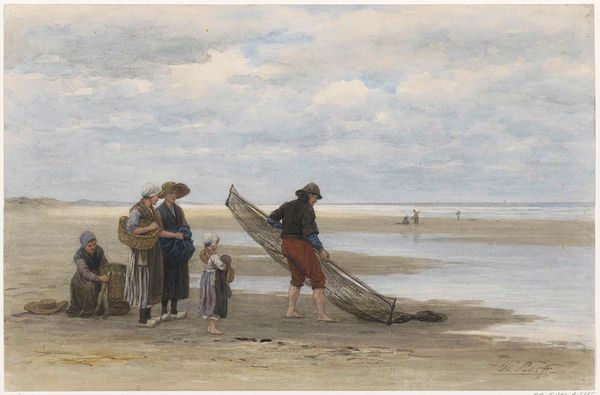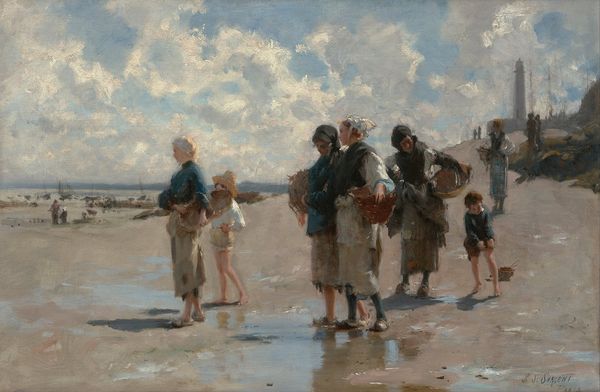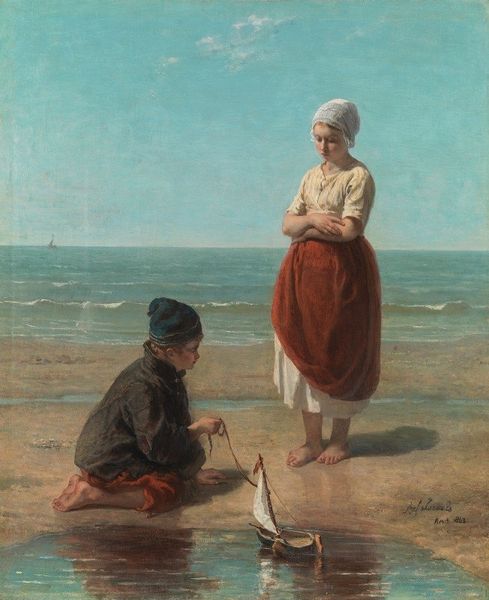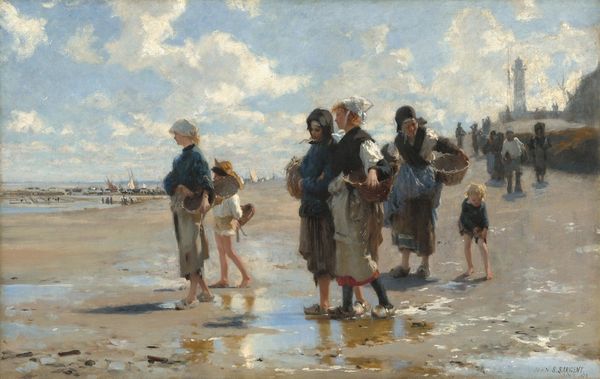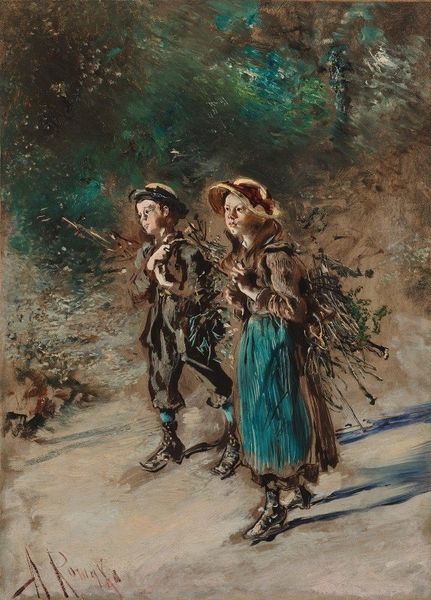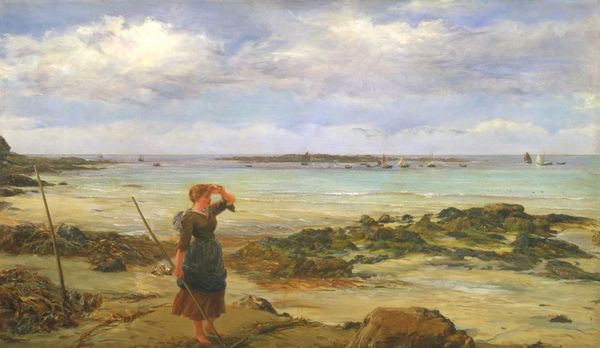
painting, oil-paint
#
portrait
#
figurative
#
dutch-golden-age
#
painting
#
impressionism
#
oil-paint
#
landscape
#
painted
#
figuration
#
oil painting
#
genre-painting
#
realism
Copyright: Public Domain: Artvee
Curator: Jozef Israëls’ painting "Two Children Wading" presents us with a glimpse into the life of a fishing community. The soft light and muted colors evoke a sense of melancholy and quiet determination. Editor: Immediately, I'm struck by the composition. The figures are centrally placed, yet the blurred edges and watery reflections suggest something more ethereal. The subdued palette—primarily blues, grays, and browns—reinforces this somber mood. Curator: Absolutely. Israëls was deeply interested in the plight of the working class and his art is frequently understood as social commentary. This piece in particular makes one reflect on how such childhoods must have differed dramatically from our own, embedded as it is within a tradition of labor. We can reflect on questions of identity here: who are these figures, and what socio-economic realities do they reflect? Editor: Precisely. I would also suggest we consider Israëls’ masterful handling of light and texture. Notice how the subtle variations in tone and the application of visible brushstrokes to the water suggest movement and depth, and emphasize the raw materiality of the figures. How they emerge from this almost amorphous surface is visually stunning. Curator: Yes, that contrast serves to underline the precarity of the lives portrayed, bringing forward the socio-political ramifications and making it hard not to reflect on broader economic inequities. Editor: There’s also the matter of semiotics. Consider the weight of the fishing tools carried by the figures. Their symbolism is rather powerful. These aren't just practical objects; they become emblematic of the daily grind, speaking to how these children engage in hard physical labor and face all types of risks daily. Curator: And one wonders if this artwork engages in any kind of dialogue with broader issues of labor and social injustice, reminding viewers of systemic inequities in art depicting working class children. How did these kinds of representations serve certain agendas in the era? Editor: True, and by reducing the subjects to forms, shades, textures, and movements, we're forced to look closer and notice everything around those elements, allowing the historical context and cultural critique to rise on its own through close attention. Thank you for these thoughts. Curator: It's important to not only contemplate how form serves to emphasize context, but how the context, whether social, economic or political, shapes the viewers’ readings of the artwork as well. Editor: It's truly an evocative piece, one that skillfully combines formal elements with deeper socio-economic commentary.
Comments
No comments
Be the first to comment and join the conversation on the ultimate creative platform.
